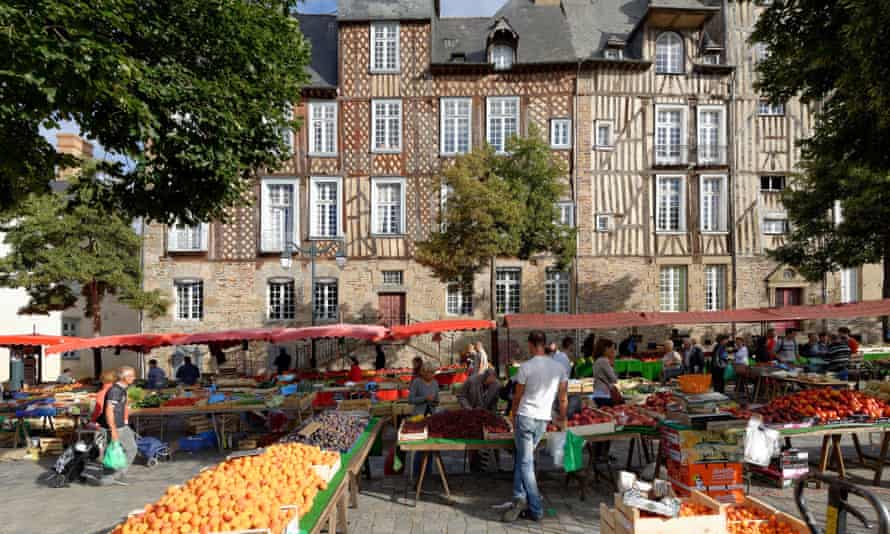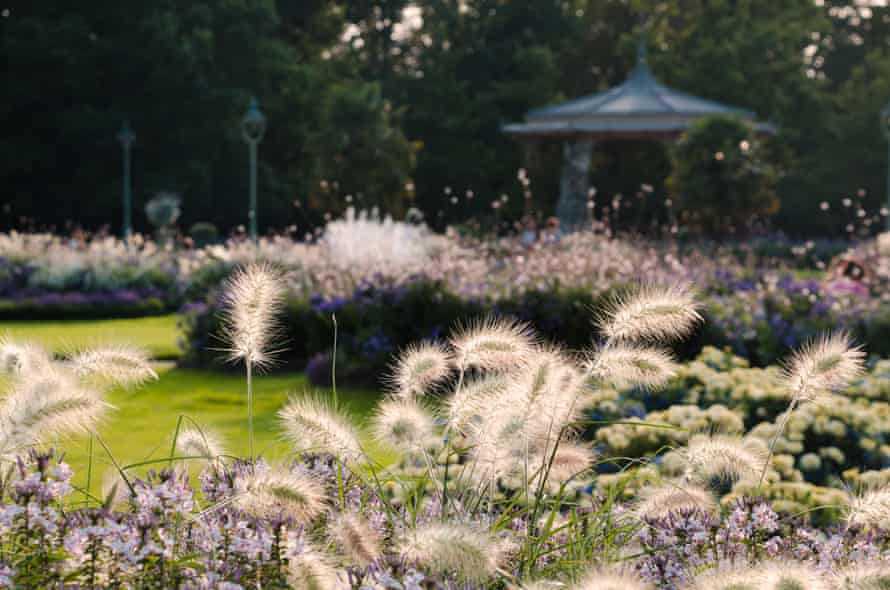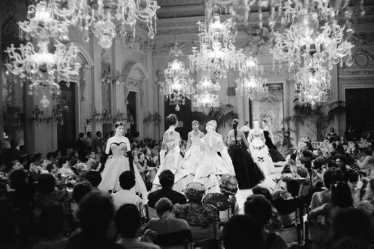
Food
Rennes is a great place for foodies. The speciality is a galette-saucisse – Breton street food. It’s a sausage wrapped in a buckwheat galette, maybe with onions, but strictly no sauce (if you’re Breton). It’s sold in the main market in Place des Lices, in smaller Les Halles market, and by the many food trucks outside the football stadium on match days. My restaurant, Coquille, is on rue Nantaise, which has become a little gastronomic hub close to the city centre. We serve dishes using local produce, such as fish, seafood and vegetables from small market gardeners, but the cuisine is influenced by my time working in Asia. Also on the street is the very traditional Café Breton, a real institution with an extensive menu of classics and modern dishes. There’s also a super Thai restaurant, Chawp Shop Kphet. Pierre Restaurant de Copains, run by a friend who was a finalist in Top Chef [the French version of MasterChef], is a lively, trendy place to hang out. You could spend days eating on just this street.
Inspiration
The Musée de Bretagne is really interesting – a journey through the history of Brittany and its people – and has some works many will recognise, including sketches by greats such as Picasso and Gauguin. The most famous is Le Nouveau-né, by 17th-century artist Georges de la Tour. There are also pieces by artists inspired by Brittany, such as Narcisse Chaillou and Octave Penguilly, plus regular exhibitions of modern art and sculpture.
Neighbourhood
Rennes is pretty small, so it’s hard to pick out a particular neighbourhood, but the area around Place Saint-Germain, just next to Saint-Germain church, is great. It has an attractive little square and good places to eat and shop; a new Metro line opening later this year will have a stop here. Behind the church is an amazing Japanese restaurant called Le Fuji: it has been there for about 30 years and is really authentic. For shopping there’s a fantastic bookshop, Librairie Le Failler, which does interesting editions. And across the river, interesting stores on rue Vasselot include Wakatépé, which only sells ethical goods – organic cotton and other sustainable clothing, and vegan shoes.
Green space

The main park in Rennes is Parc du Thabor, which dates from the 18th century and is on the highest hill in the city. When it first opened, only men were admitted. It has formal gardens, a bandstand and an aviary, but there’s a prettier park nearby: Parc Oberthür is small but more charming, quieter and a bit wilder. It’s the garden of the old residence of print maker François-Charles Oberthür and his wife, Marie Hamelin. I love taking my kids there – it has some ancient trees and a lake with lots of birdlife.
Nightlife
Bar Le Doujezu is a renowned hangout in Rennes. The name is a play on the words for “sweet Jesus” and it attracts a good mix of ages. The music is quite rocky and the bar top is set on an old Mercedes, which is cool. South of the centre, 1988 Live Club has guest DJs from all over Europe. It’s very popular with techno fans, but there’s something for everyone there. I’m a big fan of rock music, and even though we don’t really have a rock scene in France like in Britain, we do have a lot of concerts. I like The MeM, a little way out of town along the river: it’s a great venue, like a big-top tent, and there are some riverside bars, or guinguettes, nearby. A favourite, just reopened for summer 2022, is La Basse Cour, on an old farm.
Where to stay
The Magic Hall hotel (doubles from €68 room-only) is a cool place to stay, especially if you’re a music fan. There’s a soundproofed music room and the bedrooms are all different. The downstairs area is like being in someone’s house, with an open kitchen and lounge area.
Chef Arnaud Guilloux was born and grew up near Rennes, but worked all over the world before returning home to the Breton city in 2017



